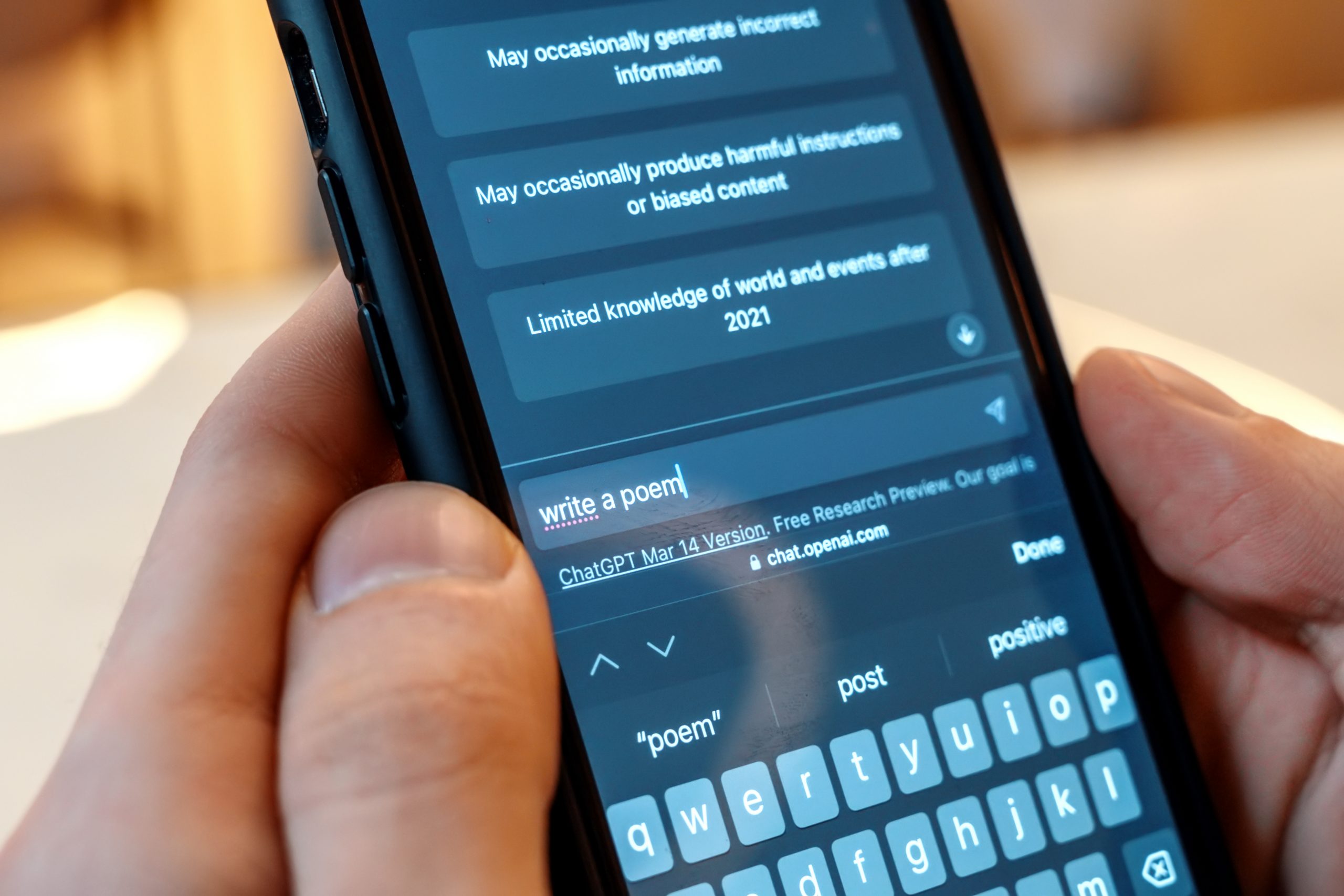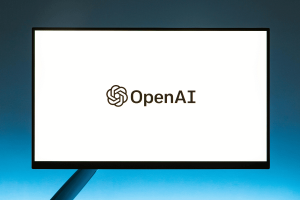In the utilization of generative AI tools, one skill holds the key to unlocking their true potential – AI prompt engineering. This is the process of designing and creating prompts used to communicate with AI systems with the goal of optimizing the quality, usability, and accuracy of their outputs.
At its core, it’s about effective communication. It’s the language we use to instruct machines, a critical bridge between our intentions and the responses we seek. Picture it as forming meaningful dialogues with AI systems, where the precision of your prompts determines the quality of the conversation.
Why does mastering this skill matter?
The answer lies in efficiency and accuracy. Imagine having a personal assistant that can generate content, interpret data, or simulate customer responses — all at your command. The catch? It comprehends and responds based on the cues you provide. That’s where the art of crafting effective AI prompts comes into play.
Throughout this guide, we’ll delve into the practical techniques you can employ to allow you to communicate seamlessly with AI models. We’ll demystify the process of instructing AI systems, ensuring that the responses generated align with your goals. Whether you’re a seasoned professional or a newcomer, we will equip you with the tools to harness the capabilities of AI through well-crafted prompts.
The Importance of AI Prompt Engineering
Mastering AI prompt engineering and crafting good AI prompts is crucial in unleashing the true potential of generative AI systems. It serves as the tools’ guide in generating correct and relevant output and is considered a game-changer in leveraging the capabilities of AI. This is demonstrated in four specific aspects, namely:
Efficiency
The clarity and precision of AI prompts directly impact the effectiveness of generative AI systems. Clear prompts lead to a better understanding of goals, resulting in faster and more accurate outcomes. It’s akin to providing explicit instructions to a trusted assistant, fostering smooth and productive collaboration.
Customization
Effective AI prompts act as personalized instructions, tailoring outputs to specific requirements. Whether generating content, analyzing data, or simulating responses, AI adapts to individual objectives. It’s like having a tool that not only understands your language but speaks it fluently, meeting your needs precisely.
Creativity
AI prompts are architects of creativity, channeling the innovative capabilities of AI systems. Clear and context-rich prompts guide the model to think creatively within set boundaries. This transforms the interaction into a collaborative, creative process where prompts inspire machine-generated outcomes.
Democratization
The democratization of AI hinges on accessible communication and the acquisition of this skill opens doors for individuals across diverse backgrounds. It empowers everyone to harness generative AI’s potential and makes it a tool for the masses.
Simply put, the significance of good AI prompts lies in streamlining interactions, personalizing outcomes, fueling creativity, and democratizing access to AI’s capabilities. It’s about shaping a future where communication with AI becomes an accessible and impactful art form for all.
6 Skills Needed to Master AI Prompt Engineering
For some, crafting effective AI prompts is more than just a process but an art in itself that demands a skill set consisting of six things.
1. Language Proficiency
The design of effective AI prompts lies greatly on deep linguistic understanding and language proficiency, specifically in syntax, semantics, and pragmatics. Such skill facilitates the creation of clear, precise, and unambiguous prompts that reduce the chance of misinterpretation and misunderstanding.
2. Data Analysis and Interpretation
Prompt engineering is an iterative process that requires continuous testing, refinement, and adaptation. As such, skills in data analysis and interpretation, paired with the patience and commitment to ongoing learning, are important in refining and optimizing prompts that lead to success in the field of automated content generation.
3. Bias Mitigation and Ethical Awareness
Being aware of inherent biases in AI models – born from unfiltered data sets – and having the ability to mitigate them as you generate prompts is crucial in upholding ethical considerations in AI. Users must be able to comprehend bias and stick to responsible AI practices in order to ensure diverse, inclusive, and harmless outputs.
4. Critical Assessment
Approaching AI-generated content with a discerning eye is vital as AI systems aren’t always accurate and factual. Critical assessments that involve fact-checking and critical thinking help ensure the appropriateness and reliability of content before utilization.
5. Problem-Solving and Creativity
Problem-solving skills are crucial in crafting AI prompts to address specific objectives, anticipate challenges, and refine prompts. Creativity, on the other hand, plays a key role in designing innovative prompts, experimenting with writing styles, and enhancing the overall user experience. Together, they ensure that you can mitigate ambiguities and drive the precision and innovation needed for effective human-AI interactions.
6. Adaptability
Adaptability is necessary not only when generating prompts but in the general field of AI. As it is fast evolving, you need to be open to learning new tools, methodologies, and techniques along the way. And if we’re talking about the importance of adaptability specific to prompt engineering, it enables for the adjustment of prompts based on feedback and data analysis.
These skills serve as the basic foundation in mastering AI prompt engineering. They will help you navigate the dynamic interplay between language and machine and guide you to successful interactions with AI systems.
10 Essential Techniques for Writing Effective AI Prompts
We’ll now get into the heart of this guide, which are the practical tips and tricks you can use to write effective AI prompts. These are key to harnessing the full potential of generative AI and achieving the output you desire.
1. Adapt a human-like approach
Artificial intelligence is obviously far from being human or even human-like, but even so, it would help to Infuse a human touch into your prompts by framing them in a way that a person might naturally communicate. Instead of rigid commands, consider how you would ask a colleague for information or assistance or just how you would carry a conversation with them. After all, we did say at the start that AI prompt generation is basically just about effective communication, albeit with a sentient program instead of an actual human being.
2. Be specific
Remember this: generic prompts lead to generic results. When it comes to AI prompting, it’s all about specificity. Avoid vague or ambiguous language, and instead, provide explicit details about what you’re seeking. You can mention content type or any specific requirements that are needed. Clarity in your instructions enhances the AI’s ability to generate targeted and relevant outputs.
3. Give clear instructions
Doubling down on specificity, it’s best to eliminate ambiguity from your prompts by offering precise and straightforward instructions. Clearly communicate the task at hand, any constraints, and the expected outcome. Utilize action words such as do, don’t, avoid, include, etc. The more clarity you provide, the better the AI can comprehend and fulfill your request accurately.
4. Specify the output
Still along the same lines, it’s important to specify the type of output you want generated or the format in which you want your content to be presented in. Whether it be a story, code, report, or other types of outputs, providing this information ensures that the AI generates a response that matches your preference.

5. Let it assume roles
Encourage the AI to embody a particular role – person, process, or object – or perspective relevant to your request. By prefacing prompts with phrases like “Act as if you are…” or “Imagine you are,” you guide the program to consider a specific context, and it will tailor its answers accordingly.
6. Provide examples
One great way to guide AI toward the right direction is to illustrate your expectations by offering examples or reference points. While avoiding copyrighted content, you can describe the tone, style, or structure you’re aiming for or give actual examples of what you want it to generate. These prove extremely valuable in assisting the AI in understanding and replicating your desired output.
7. Consider your audience
When creating your prompts, include who your audience is, what sort of tone you’d like the AI to use or the tone you want to set, and the style of writing (or art, depending on your preferred output) you want it to adapt. For example, you can mention that your audience are experts in a certain field and so you would want for the AI to sound professional and authoritative so as to increase reliability. Doing so enhances the relevance and suitability of the AI’s responses.
8. Build on prompts
As with any activity, you can’t always get it right on your first try, so don’t give up if the AI doesn’t generate your desired content after a single prompt. Instead, build on it and refine your prompt as you go. Consider changing your wording or tone or adding more context and specificity to your prompt to guide the AI toward the correct output.
9. Offer feedback
Automated content generation is a collaborative effort. Treat it as you would a collaboration with your colleague – except this time it’s with AI. Provide feedback on the software’s outputs by highlighting what was useful and suggesting improvements. This loop allows the AI to learn and determine the type of content you want, essentially enhancing its performance in the process.
10. Play around
Embrace experimentation and creativity when generating your prompts. Test different phrasings, styles, or scenarios to see how the AI responds. Playing around with various approaches allows you to discover effective techniques and refine your prompt engineering skills.
These are essential techniques that you should integrate into your process of generating AI prompts in order to ensure accurate, reliable, and useful outputs.
Some Additional Tips for AI Prompt Engineering
While we did just go through important AI prompt writing techniques, we have some additional, simpler tips that you could use. Note that some of these aren’t always applicable and will depend on the type of content you want to generate, so use them with caution.
- Simply by repeating the question or prompt – no changes made – you will see how vastly different the AI’s answer could be.
- Some AI tools actually have a sense of awareness, which they lose once you leave or refresh the page – take advantage of this if you want fresh responses.
- When it comes to natural language generation or text outputs, they often break down after 500 words, so instruct the tool to keep it within that limit.
- Request sources for justification or support if needed.
- If available, consider getting the premium version of whatever AI tool you’re using as they often come with better algorithms and additional features.
- Aside from you providing examples, ask the AI for examples to see how well it understands your initial prompt.
- Adding on to the previous tip, you can ask it to repeat parts of your original request or any data you fed it in order to gauge its understanding.
- Be patient, keep practicing, and just have fun!
A Look at the Ideal AI Prompt Formula
To cap off this guide, let’s have a look at the ideal AI prompt formula that adopts the many different techniques and tips that we’ve shared with you. You may use this as a guide for your prompts and improve upon it as you go.
“Assume that you are” + “generate a” + “in this specific format” + “in order to” + “a specific type of audience.”
This simple prompt makes the AI assume a role for context, informs it about the specific output and format it needs to generate, and makes it consider your goal and audience to adjust tone and approach.
Now, let’s actually put this formula to use. Here’s a sample prompt:
Assume that you are a digital content manager and generate an attention-grabbing social media copy to effectively promote a new lipstick product made for middle-aged women.
And here is the AI response (we used ChatGPT in this case):
Unleash the timeless beauty in you! Introducing our latest lipstick collection tailored for the grace and confidence of middle-aged women. Elevate your glam game with shades that complement your vibrant spirit. Ageless elegance, now at your fingertips.
#AgelessBeauty #LipstickPerfection #ConfidenceAtEveryAge
Now, it’s up to you if you’re going to use this as is or ask your AI tool to generate another response. If you ask us (and consider this a tip), it would be best to make edits of your own to add that human touch to your content.
If you want, you can also check out our ultimate list of ChatGPT prompts for further reference!
Maximize the Potential of AI Systems through Effective Prompts
“Garbage in, garbage out.” This age-old adage perfectly summarizes the importance of crafting good AI prompts.
As such, it’s important to think of AI prompt engineering as an art that demands careful consideration and precision and also a lot of thoughtful experimentation. Don’t expect perfect results right off the bat and instead consider it an evolving process that is enhanced through your conscious efforts for improvement. You can utilize the techniques and tips listed here when using any AI system – AI-Pro’s suite of AI tools included. These shall enable you to extract your desired outcomes and help you maximize their true potential.
So, remember, the journey with AI is a continuous loop of crafting, testing, and refining — an iterative dance that propels you towards ever-improving, impactful results. If you’re ready to try out your new prompts, check out AI-PRO today and see how your results improve!









